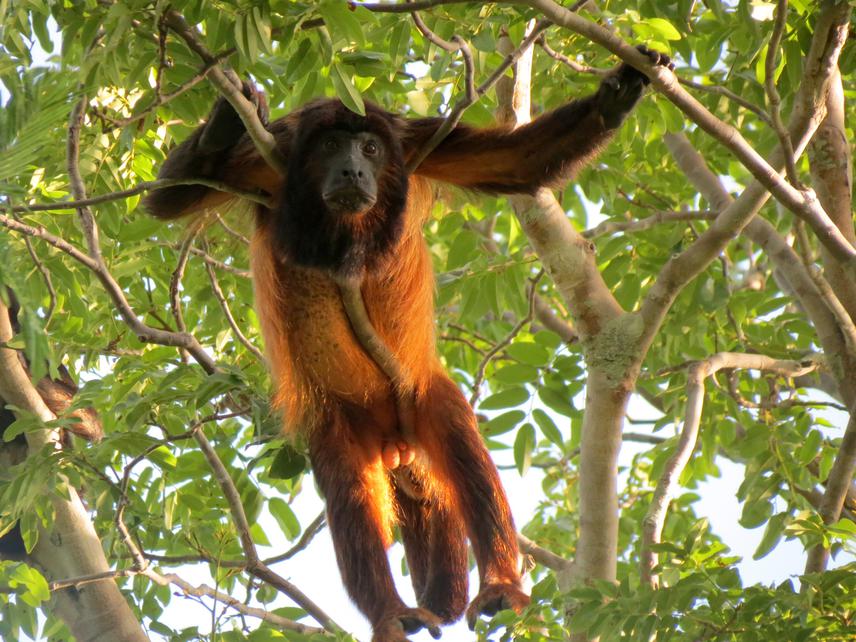Robério Freire Filho
Other projects
11 May 2016
Conservation Strategy for Caatinga Howler Monkey (Alouatta ululata), Northeastern Brazil
24 Jan 2024
Endangered Howler Monkey Conservation Project in Northeast Brazil: Population Dynamics, Anthropic Threats and Private Protected Areas
The results of the first phase of this project have helped defining priority actions for the conservation of the Caatinga howler monkeys and lead to its inclusion in the Brazilian Action Plan for the Conservation of Primates in the Northeast. For the second phase, we intend to monitor two groups of the species for one year and further investigate their ecology, behaviour and general biology. Moreover, we will investigate how climatic changes predicted for NE Brazil may interfere in the socioecology of the species. Finally, we will use this information to propose priority areas for conservation of the Caatinga howler monkeys.

Adult male resting.
The Caatinga howler monkey (Alouatta ululata) is a little known species endemic of NE Brazil, included in the Brazilian list of threatened fauna and classified as Endangered by the IUCN. Its threatened status is due to a small and declining population, consequences of loss of forest, habitat fragmentation and hunting. There is very little information about the species ecology, behaviour and biology, key information to support conservation strategies. Most of the species’ range is in the Caatinga although it extends into the Cerrado. Primates may be particularly vulnerable to climatic changes, because they often show distinct behavioural and ecological patterns according to seasonal variation in temperatures, rainfall and level of humidity. Therefore, understanding how climatic variations throughout the day and year influence socioecological aspects is fundamental for species conservation. Thus, we will monitor two groups of the species for one year and further investigate their ecology, behaviour and general biology. We will use mathematical models such as Structural Equation Modelling (SEM) and other correlation tests, based on multiple regression analyses to measure how the behavioural and ecological budget will be affected by the predicted future climate changes. Finally, we will use this information to propose priority areas for conservation of the Caatinga howler monkeys.
To raise awareness of the local community, we will make a traveling exhibition with informative banners on the hunting of animals in the region and impact of this activity on local biodiversity, the acquisition of diseases through the consumption of wild animals and conservation of Caatinga howler monkeys. The banners will be fixed in public schools and community centers in the North-central Piauí. In addition, we will hold talks and educational activities addressing such issues.
The main conservation outputs of our project are: establish a long-term field-site to conduct studies on the species, train local students and create local conservationists in the area; produce socioecological knowledge about the species to support environmental management in conservation units. This information can also help in the maintenance of ex situ animals, as well as in translocation and reintroduction interventions; scientific knowledge for the design of future conservation strategies in different scenarios; establish the top 5 priority areas for the conservation of the species; Create awareness on the local population about the negative impacts of hunting and of keeping animals in captivity, aiming at inducing long term behavioural changes in the local population.